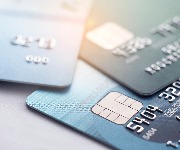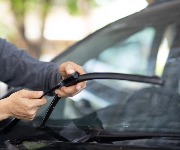How 0% Balance Transfers Helped Me

Ed Bowsher tells us how 0% balance transfer cards helped him.
2006 was a good year for me. At work, I was writing about investment for Fool.co.uk, which was a dream come true.
Away from work, I went on two good holidays, and I was having a great time in London. I saw lots of theatre, went to several fancy restaurants and bought plenty of rounds down the pub. I figured it was crazy to live in one of the greatest cities of the world and not enjoy what it had to offer.
The only problem was I was spending more than I earned and by the end of the year I had built up a credit card debt of around £1200. What's worse, I was paying interest of 16% a year or around £190. I was throwing money away.
I could have cleared the debt in an instant by selling some shares in my stock portfolio and that was arguably the prudent thing to do. But I was reluctant to sell as I thought there was a good chance that my shares would do well over the long term.
But there was another option. I could follow the advice of several articles on The Fool and switch my debt to a 0% balance transfer card.
So that's what I did (belatedly). I took out a Virgin Credit Card and moved my debt to that.
Then I started to monitor my expenditure more closely so that I could see where I was spending carelessly. Once I'd done that, it wasn't hard to find things to cut. I was also fortunate to receive a pay rise. I could now pay down the credit card debt and every payment I made was reducing the actual debt, not going towards extortionate interest rates.
The debt is now gone and I'm delighted.
Don't get me wrong. I know that many Fools have faced much, much tougher financial challenges than what I've just described.
But switching my credit card debt to a 0% balance transfer card was a very useful tool that helped me turn things round more quickly and in a less wasteful manner. If you have debt on your credit card, I urge you to think about switching to a 0% balance transfer card.
You may know that the vast majority of 0% cards charge a fee these days and that's a shame.
Obviously fees cost money but they also make it harder to pick the right card for you. The problem is balance transfer fees can be deceptive. That's because you pay the fee on the whole outstanding balance. When you pay off interest over the year, you pay it on a constantly shrinking balance. (That's assuming you're paying it off like a good Fool!)
So if you pay a fee of 2%, it'll probably be more expensive than a 3 or 4% annual interest rate - assuming it takes you a year to pay off the whole debt.
So here's a table that could help you with your decision. It's based on a transfer of £1000, which is fully repaid in equal instalments by the end of the 0% deal. It tells you what the equivalent of the fee would be if the fee was charged as an annual interest rate.
Interest-free period | Fee of 2% | Fee of 2.5% | Fee of 3% |
|---|---|---|---|
Six months | 7% AER | 8.9% AER | 10.7% AER |
Nine months | 4.9% AER | 6.1% AER | 7.4% AER |
One year | 3.7% AER | 4.7% AER | 5.6% AER |
Source M&S Money
So if you think you're going to be able to pay off the debt pretty quickly, going for a low fee is particularly important. But if you're going to take a year or more, the size of the fee doesn't matter as much, instead look at the period for which the 0% period lasts.
Should you switch to a balance transfer deal?
Here's the checklist to help you decide:
1. What interest are you currently paying on your credit card debt? If you're not on a special deal, you're likely to be paying somewhere between 12 and 20% APR.
2. Estimate how long it will take you to pay off the debt.
3. Look at the table higher up in this article. It could help you work out what "interest rate" you'll effectively be paying in the form of a fee. Is that effective interest rate lower than the current interest rate you're paying?
If the answer to the above question is "yes", then visit our credit card centre and look for a deal that's good for you.
Most Recent
Comments
Be the first to comment
Do you want to comment on this article? You need to be signed in for this feature








